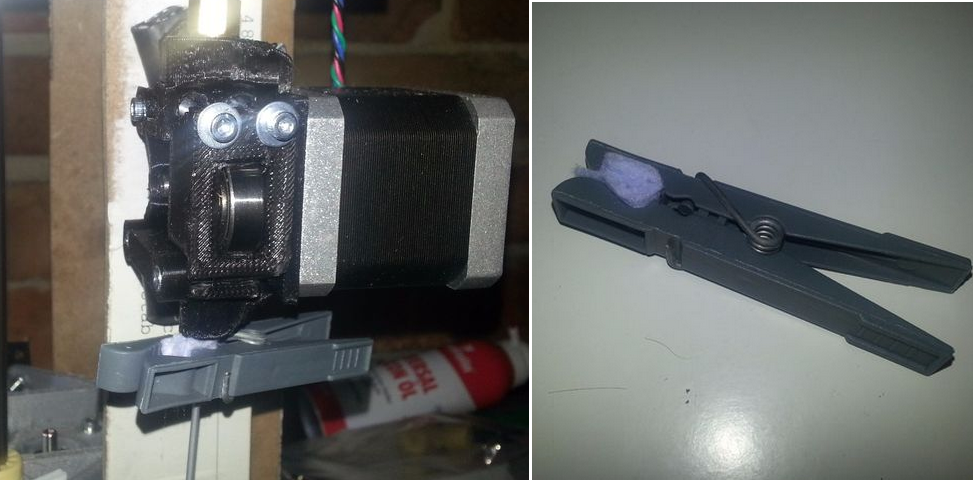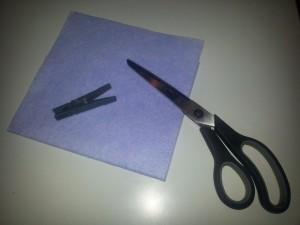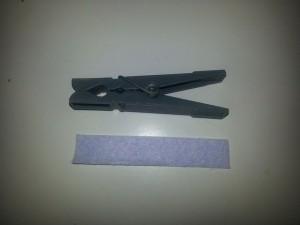If you’ve been under the misguided impression that all DIY projects are complicated, Instructables contributor “DeStulp” has provided strong evidence to the contrary. This mysterious maker clearly agrees that the simplest and most straightforward answer usually is the right one, as her (or his) simple, 3D printer Filament Cleaner suggests.
Why would you need to clean filament? With fused filament fabrication (FFF), filament fed through your machine can introduce dust, dirt, and other stuff that can cause major problems, like a clogged nozzle. Many people get filament shipped to them and find some of it broken in transit and coated with light powder from the material breaking down. Whatever the case, debris on the filament translates to a dirty print at best and possibly a malfunctioning 3D printer.
DeStulp’s Filament Cleaner is even more basic than a 3D printed one we reported on last fall and it doesn’t actually use 3D printed parts. You’ll need a clothespin (go with a plastic one) and a small chunk of a “kitchen wipe,” by which DeStulp must mean thin, compressed sponge sheet (see the photo). You won’t need a well-stocked tool box for this project or “hack” either as the only tool you’ll be using is a pair of scissors (or a sharp knife).
Here’s how it works: You cut out a rectangular piece of the wipe, making it a little wider than and at least as long as the clothespin. Next, you fold the piece of sponge over a few times, creating a kind of a roll, which you clip between each arm of the clothespin. And… that’s it! That’s your homemade Filament Cleaner.
The Filament Cleaner needs to be installed anywhere between the spool and the extruder so that the material passing into the extruder first goes through the cleaning process. DeStullp recommends placing it just in front of the feeder.
The filament filter/cleaner that we told you about back in October suggested using a slight amount (less than a drop) of mineral oil each time you run filament through it for an average-length print job as lubricating the filament seems to help keep the machine itself clean and slightly lubricated but you should read the maintenance information about your individual 3D printer before doing so. Also, there’s the possibility of the oil making the print bed even slightly slippery, which could prevent the printed material from sticking.
Again, the best advice seems to be to keep it simple. Isn’t that the beauty of DeStulp’s approach anyway?
Have you tried a filament cleaner for your 3D printer? Will DeStulp’s setup work for you? Let us know in the Easy Filament Cleaner forum thread over at 3DPB.com.
Subscribe to Our Email Newsletter
Stay up-to-date on all the latest news from the 3D printing industry and receive information and offers from third party vendors.
Print Services
Upload your 3D Models and get them printed quickly and efficiently.
You May Also Like
The Market and Industry Potential of Multi-Material 3D and 4D Printing in Additive Electronics
Additive manufacturing leverages computer-based software to create components for products by depositing either dielectric or conductive materials, layer by layer, into different geometric shapes. Since its birth in the 1980s,...
3DPOD 262: Bio-inspired Design for AM with Dhruv Bhate, Arizona State University
Dhruv Bhate is an associate professor at Arizona State University. There, he looks at structures, materials, and design. Previously, he worked at PADT as well as in the semiconductor and...
3DPOD 261: Tooling and Cooling for AM with Jason Murphy, NXC MFG
Jason Murphy´s NXC MFG (Next Chapter Manufacturing) is not a generalist service; instead, the company specializes in making tooling. Using LPBF and binder jet, the company produces some of the...
3DPOD 260: John Hart on VulcanForms, MIT, Desktop Metal and More
John Hart is a Professor at MIT; he´s also the director of the Laboratory for Manufacturing and Productivity as well as the director of the Center for Advanced Production Technologies....



































